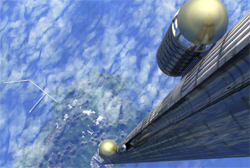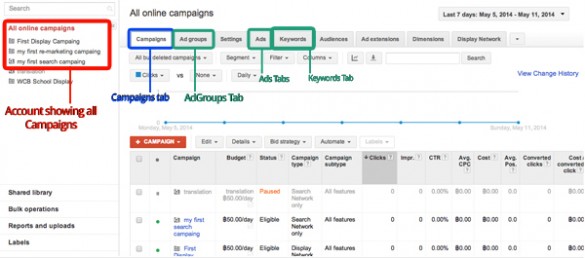Google’s Adwords Redesign Beats Space Elevators and Robot Cars
 The leaders at Google / Alphabet are on a quest: for self-driving cars, network connections by balloon, data driven life sciences, space elevators and teleportation.
The leaders at Google / Alphabet are on a quest: for self-driving cars, network connections by balloon, data driven life sciences, space elevators and teleportation.
They’re seeking long-term plays to diversify from the part of their business that currently makes them viable, advertising. Some days its seems Google’s leaders are past advertising – except for the profits. At Google, that’s where profits currently come from. And so they’ve redesigned Adwords for marketing in a mobile-first world.
Adwords is the money door where Google’s customers buy and first see the results of value from their advertising. It is a three-sided marketplace which invisibly connects publishers and advertisers, by bidding and distribution which Google orchestrates. While Ad Words is a great business with a functional interface, their customer experience is far from frictionless, especially for beginners.
One look at the AdWords interface confirms this. It is text driven, and lacks graphics to structure processes or pay off purchases with striking visual insights. In fact, its workflows can be so irksome that Adword’s most active users typically use a host of third-party tools to ease their efforts. So, the Adwords interface is daunting to beginners and abandoned by experts. Of course, the intersection of pain and revenue is where design can often make the greatest difference.
Design for Business: Improving “The Money Door”
When small and medium sized buyers struggle with Google, the impact extends beyond a few lost sales for Google. Marketplaces benefit disproportionately by scale, so any reduction in competition get multiplied through bidding and expressed lower ad rates in the remaining deals. That represents a loss to publishers, Google and for the frustrated advertisers who could have secured business if they were more successful in their use of the marketplace.
Here’s what Jerry Dischler, Google’s VP of Product Management for AdWords has to say about the upgrade:
We want to make it super easy to execute and optimize campaigns based on your unique marketing objectives.
We want to surface insights and help you visualize them in more actionable ways. By seeing the data most relevant to your business goals, you can spend more time optimizing campaigns and identifying opportunities.
At the end of the day, you need simple yet powerful tools that help you do more in less time. You should be able to complete your most important tasks, like managing ad extensions and building reports, all in one place. With less clutter and more intuitive workflows, you can quickly make the changes that move your business forward.
Technically, this won’t increase demand – but it will let more of that demand result in sales. And the improvement in reporting will help users to better optimize their spending, creating the foundation for expanding the AdWords ecosystem.
More Valuable Relationships
Remember, the vast majority of Google’s paying customers are out to grow their business through advertising. Anything that can increase the volume, value and duration of these relationships is positioned to more plausibly drive increased revenue to Google than a successful ‘moonshot’ in industries where Google has yet to earn ruminative relationships.
Of course discovery and invention are inspiring. I want to ride a space elevator too. But, Google hasn’t built that business yet; it’s still searching for underlying methods. Helping today’s customers succeed is the lay-up Google must make to stay in the game and benefit from their long-term investments.
Adwords needed fixing. And though improving it won’t make business headlines, is good news for the tens millions of people Google touches everyday who buy, see, or sell space to Google for ads. It will more plausibly drive Google’s revenue growth this year, and support Google’s share price.
And that’s why the Adwords redesign may be a more exciting challenge than robot cars and space elevators. It can pay off for real people and as real business growth – which is an ascent that no space elevator is ready to match, at least not for a long time to come.


 The future of digital experiences will be built by strategists who grasp the full array of emerging business, social, and technical models. Specialties in user experience, branding, application design, and data science are laying the foundation for richer user experiences and business models breakthrough products and revenue based marketing.
The future of digital experiences will be built by strategists who grasp the full array of emerging business, social, and technical models. Specialties in user experience, branding, application design, and data science are laying the foundation for richer user experiences and business models breakthrough products and revenue based marketing.
4 Responses to "Google’s Adwords Redesign Beats Space Elevators and Robot Cars"
May 5, 2016
[…] article was originally published on Useful Arts, Dave’s blog about the future of digital marketing. var disqus_url = […]
August 25, 2020
check out the most amazing ladies on sex treffen ludwigsburg and enjoy hot chat
September 13, 2020
i just love spending nice time with ficken in dortmund ladies so check them out now
August 10, 2022
Wow, I love it! Thank you so much for sharing